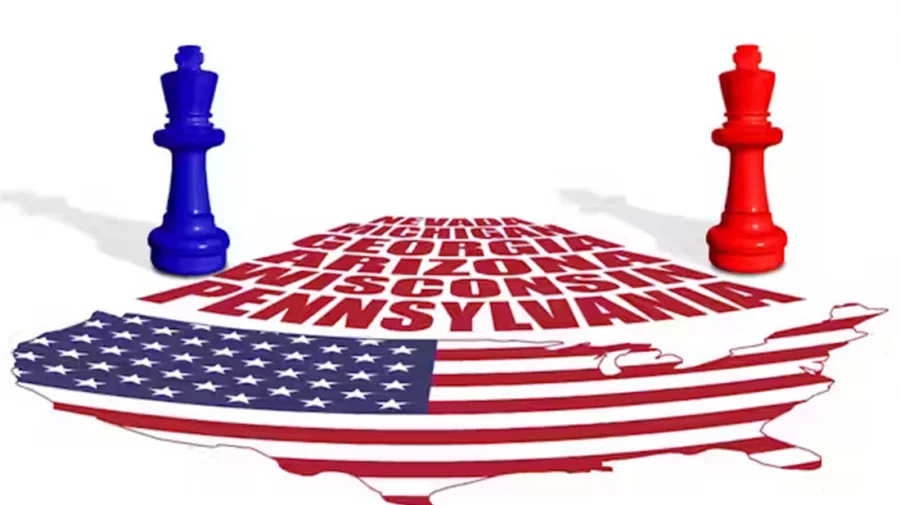Skip to main content
System of American election
Introduction
- Briefly introduce the concept of the U.S. election system.
- Explain why it’s important to understand how elections work in the U.S. (e.g., it impacts local and global politics, policy-making, etc.).
- Mention the complexity and unique features of the system that set it apart from other countries.
1. The Structure of U.S. Elections
- Federal vs. State Elections: The U.S. has two levels of elections: federal (presidential, congressional) and state/local elections (governor, state legislature, local offices).
- Federal elections: Every four years for the president, and every two years for Congress.
- State elections: Vary by state but include governors, state legislatures, and ballot initiatives.
2. The Role of Political Parties
- Two Major Parties: The U.S. primarily has a two-party system — the Democratic and Republican parties — but there are also minor parties (e.g., Libertarian, Green).
- Party Primaries: Before the general election, both parties hold primaries to choose their candidates. These can be closed (only registered party members can vote) or open (any registered voter can vote).
- Independent and Third-Party Candidates: Though third-party candidates rarely win, they can influence the election by drawing votes from major parties.
3. How the Electoral College Works
- What is the Electoral College?: The U.S. doesn’t elect the president directly by popular vote; instead, the Electoral College plays a central role.
- The Number of Electors: Each state gets electors equal to its total number of Congressional representatives (Senators + House members). There are 538 electors in total, and a candidate needs 270 electoral votes to win.
- Winner-Takes-All System: Most states use a winner-takes-all approach, where the candidate with the most votes in a state wins all of its electors (except in Nebraska and Maine, which use proportional allocation).
- Possible Outcomes: Sometimes, a candidate can win the popular vote but lose the Electoral College (e.g., 2000 and 2016 elections).
4. Voting and Voter Rights
- Eligibility to Vote: U.S. citizens must be at least 18 years old, a resident of the state, and meet other requirements (such as not being a felon in some states).
- Voter Registration: Voter registration is required in most states, and the process varies. Some states have automatic voter registration, while others require individuals to actively register.
- Voter ID Laws: Different states have different voter ID laws, which can affect access to voting.
- Early Voting and Absentee Voting: Many states allow early voting and absentee ballots to make voting more accessible.
5. The Process of Running for Office
- Campaigning: Candidates typically need to raise money, run advertisements, hold rallies, and participate in debates to win over voters.
- The Role of Media: Media plays a huge role in shaping public opinion. Social media has also dramatically changed how candidates communicate with voters.
- Debates: Presidential debates are a key part of the election cycle, allowing candidates to showcase their policies and leadership skills.
6. The Voting Process
- Election Day: Elections are held on the first Tuesday after the first Monday in November. Voters cast their ballots in person or by mail (in many states).
- Counting Votes: After polls close, ballots are counted, and results are announced, often with preliminary counts coming in first and final counts after a few days.
- Certifying Results: In some close races, election results may be contested and undergo recounts or legal challenges.
7. The Controversies and Challenges of the U.S. Election System
- Gerrymandering: The manipulation of electoral district boundaries to favor a particular party or group. This can affect how votes are distributed.
- Voter Suppression: Measures that restrict voting rights, such as strict ID laws, limited polling locations, and purging voter rolls.
- Election Security: Concerns about foreign interference, hacking, and disinformation campaigns.
- The Electoral College Debate: Many people criticize the Electoral College system, arguing that it does not represent the will of the people (since it can override the popular vote). Others defend it, citing the importance of protecting smaller states' interests.
8. The Future of the American Election System
- Reform Movements: There are ongoing discussions about whether the system should be reformed or replaced. Proposals like abolishing the Electoral College or adopting ranked-choice voting are debated frequently.
- Voter Participation: Efforts to increase voter turnout and participation, especially among underrepresented groups (young people, minorities, etc.).
- Technology and Voting: The potential for online voting, automated systems, or blockchain to improve security and convenience, while also raising concerns about privacy and fraud.
Conclusion
- Summarize the key points about the American election system.
- Reflect on why it’s important for citizens to be informed and participate in elections.
- End with a call to action, encouraging readers to vote, stay informed, and engage in the democratic process.

Comments
Post a Comment